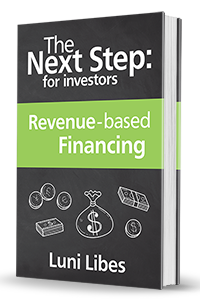Rows, columns, cells, and formulae…
Once you have a back-of-the-envelope plan that is profitable (i.e., the revenues exceed the expenses), then the next step is a full-scale financial plan.
The goal of the financial plan is to answer a few key questions about the business. Can it make a profit? If so, when? How much investment will be needed to reach break-even? How many people will be needed? All of this information will be broken down into at least three years of estimates and projections.
QUESTION 43:
When will this company be profitable?
Creating a sufficiently detailed, believable financial plan takes some time. The Next Step: A guide to building a startup financial plan will walk you step by step through that process.
What you need to know right now is how to figure out how much cash your company needs to get started and an estimate of how much cash your company will have at the end of each month, quarter, and year.
In order to determine how much cash the company needs, use the financial plan to compute the amount of cash the company receives each month from customers, the amount it spends on expenses, and any additional cash coming in or out from investors and loans. From that, calculate the cash left over.
The reason for all this is that the fuel for startup companies is cash. Once a company runs out of cash, it is out of business. Thus, by computing your running balance, you can compute how much cash is needed before the company begins earning more money than it spends. That “cash need” must be filled by an investor, either friends and family, some crowdfunding, an outside investor, or, most often, from your own savings or credit cards.
QUESTION 44:
How much money is needed to start my company?
Expect to iterate over your financial plan at least a dozen times before you consider it done. Then expect to revise that plan as soon as you have more information from your sales effort.
After at least a dozen revisions, if you cannot make the financial model profitable, you have a flaw, and you may need to abandon the idea of starting this company. If this happens, do not fret. Put the plan aside for now, and look at it again in a year or two or three. Sometimes the flaw is in the “market timing,” when a solution (especially a technology-based solution) is too early and too expensive to create a viable product or when an insufficient number of customers find value in your solution. Sometimes, after a while, a new technology comes along that makes the team size smaller or the sales process simpler, or something else happens that will lower the cost of sales sufficiently to make the financial plan profitable.
On the other hand, if, after all those revisions, you have a plan you believe is worth building, then keep one important fact in mind as you execute that plan. Your plan is wrong! As you build your business, keep revising your financial plan to take into account what you learn from the market. Do not, as too many entrepreneurs do, get hung up thinking that the plan is correct and the marketing, operations, or sales is flawed. It is far more often the other way around, where the execution is reasonable, but the plan was overly optimistic. Your plan is always just an estimate. By gathering feedback, you can make your estimate more accurate over time, but it will always be wrong.
For details on how to build this financial model from scratch, read the companion guide, The Next Step: A guide to building a startup financial plan, and/or watch the related Next Step class: Lesson 5. The Financial Model.












